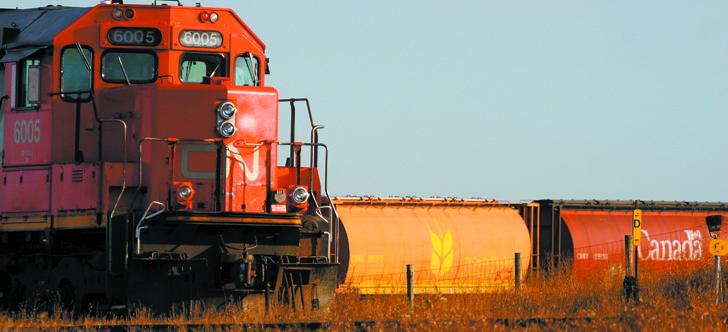Grain farmers were surprised to learn last week that roundtable meetings on transportation, led by federal transport minister Marc Garneau, will conclude without substantial input from them.
“It was grain that was the reason that this started off a year early,” said Agricultural Producers Association of Saskatchewan president Norm Hall, referring to the Canada Transportation Act review that resulted in the current consultations.
“Shouldn’t he be meeting with us?”
Problems moving a large 2013 grain crop prompted the then-Conservative government to invoke temporary measures to get grain moving and launch the review.
Read Also

U.S. government investigates high input costs
The USDA and DOJ are investigating high input costs, but nothing is happening in Canada.
The Liberal government recently extended those measures for one more year and embarked on consultations after receiving the review report.
Eight roundtables held during the past two months focused on five themes:
- safer transportation
- trade corridors to global markets
- green transportation
- passenger services
- waterways, coasts and the north
Grain movement falls under the trade corridor theme. The first roundtable on that theme included participation from ports, railways and airports.
However, the second, held July 21 in Winnipeg, included just two producer organizations: Pulse Canada and the Prairie Oat Growers Association. The Western Grain Elevator Association and G3 Canada also attended.
Hall said Transport Canada told Canadian Federation of Agriculture board members at the organization’s summer meeting this was the final roundtable, although online consultations continue until Sept. 16.
CFA has been asking for a meeting with Garneau for months with no luck, leaving it with the impression that promises of transparency and openness by the new government were empty.
Saskatchewan Agriculture Minister Lyle Stewart said he expects grain producers to be heard. Provincial governments are to be consulted after the online comments are gathered.
“We have high expectations that our stakeholders will have an opportunity to be engaged in proper face-to-face consultations, and also our government,” he told reporters in Calgary where he was attending the federal-provincial-territorial ministers’ meeting.
“We were assured we would have that opportunity.”
Stewart also said the end point is a concern because of harvest.
“That is a real issue, considering it looks like only two of our stakeholder groups may have been consulted with at this point,” he said.
“I think Sept. 16 is likely too soon to wind up consultations at a very bad time of the year for farm groups, who are obviously made up of farmers, to make themselves available for consultations.”
Prairie Oat Growers Association president Art Enns said he didn’t know why POGA and Pulse Canada were invited and others were not, but he said discussions at the roundtable focused on how to improve a system that has an aging fleet of cars and lacks capacity.
“How do you keep pushing grain through?” he said. “There is infrastructure that needs to be built to move increased volumes.”
In particular, he said, southern corridors must be enhanced for grain and all commodities that move to the United States.
He said Garneau appeared to understand the issues.
“It was a good first step,” Enns said. “There was no clear indication from the minister as far as the next steps. We emphasized it needed to move along quickly.”
The 2016 crop is expected to be a minimum 63 million tonnes and as much as 74 million tonnes, according to WGEA. The crop that triggered the backlog in 2013 was a record 76.8 million tonnes.
















